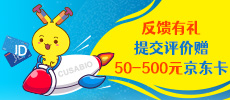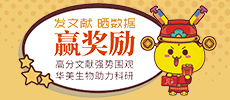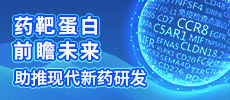Recombinant Coxsackievirus A16 Genome polyprotein
-
中文名称:Recombinant Coxsackievirus A16 Genome polyprotein,Yeast
-
货号:CSB-YP731156CGAV
-
规格:
-
来源:Yeast
-
其他:
-
中文名称:Recombinant Coxsackievirus A16 Genome polyprotein,Yeast
-
货号:CSB-EP731156CGAV
-
规格:
-
来源:E.coli
-
其他:
-
中文名称:Recombinant Coxsackievirus A16 Genome polyprotein,Yeast
-
货号:CSB-EP731156CGAV-B
-
规格:
-
来源:E.coli
-
共轭:Avi-tag Biotinylated
E. coli biotin ligase (BirA) is highly specific in covalently attaching biotin to the 15 amino acid AviTag peptide. This recombinant protein was biotinylated in vivo by AviTag-BirA technology, which method is BriA catalyzes amide linkage between the biotin and the specific lysine of the AviTag.
-
其他:
-
中文名称:Recombinant Coxsackievirus A16 Genome polyprotein,Yeast
-
货号:CSB-BP731156CGAV
-
规格:
-
来源:Baculovirus
-
其他:
-
中文名称:Recombinant Coxsackievirus A16 Genome polyprotein,Yeast
-
货号:CSB-MP731156CGAV
-
规格:
-
来源:Mammalian cell
-
其他:
产品详情
-
纯度:>85% (SDS-PAGE)
-
基因名:N/A
-
Uniprot No.:
-
别名:Genome polyprotein [Cleaved into: P1; Capsid protein VP0; VP4-VP2); Capsid protein VP4; P1A; Virion protein 4); Capsid protein VP2; P1B; Virion protein 2); Capsid protein VP3; P1C; Virion protein 3); Capsid protein VP1; P1D; Virion protein 1); P2; Protease 2A; P2A; EC 3.4.22.29; Picornain 2A; Protein 2A); Protein 2B; P2B); Protein 2C; P2C; EC 3.6.1.15); P3; Protein 3AB; Protein 3A; P3A); Viral protein genome-linked; VPg; Protein 3B; P3B); Protein 3CD; EC 3.4.22.28); Protease 3C; EC 3.4.22.28; Picornain 3C; P3C); RNA-directed RNA polymerase; RdRp; EC 2.7.7.48; 3D polymerase; 3Dpol; Protein 3D; 3D)]
-
种属:Coxsackievirus A16 (strain G-10)
-
蛋白长度:Full Length of Mature Protein
-
表达区域:2-323
-
氨基酸序列GSQVSTQRS GSHENSNSAS EGSTINYTTI NYYKDAYAAS AGRQDMSQDP KKFTDPVMDV IHEMAPPLKS PSAEACGYSD RVAQLTIGNS TITTQEAANI IIAYGEWPEY CKDADATAVD KPTRPDVSVN RFFTLDTKSW AKDSKGWYWK FPDVLTEVGV FGQNAQFHYL YRSGFCVHVQ CNASKFHQGA LLVAILPEYV LGTIAGGDGN ENSHPPYVTT QPGQVGAVLT NPYVLDAGVP LSQLTVCPHQ WINLRTNNCA TIIVPYMNTV PFDSALNHCN FGLIVVPVVP LDFNAGATSE IPITVTIAPM CAEFAGLRQA IKQ
-
蛋白标签:Tag type will be determined during the manufacturing process.
The tag type will be determined during production process. If you have specified tag type, please tell us and we will develop the specified tag preferentially. -
产品提供形式:Lyophilized powder
Note: We will preferentially ship the format that we have in stock, however, if you have any special requirement for the format, please remark your requirement when placing the order, we will prepare according to your demand. -
复溶:We recommend that this vial be briefly centrifuged prior to opening to bring the contents to the bottom. Please reconstitute protein in deionized sterile water to a concentration of 0.1-1.0 mg/mL.We recommend to add 5-50% of glycerol (final concentration) and aliquot for long-term storage at -20℃/-80℃. Our default final concentration of glycerol is 50%. Customers could use it as reference.
-
储存条件:Store at -20°C/-80°C upon receipt, aliquoting is necessary for mutiple use. Avoid repeated freeze-thaw cycles.
-
保质期:The shelf life is related to many factors, storage state, buffer ingredients, storage temperature and the stability of the protein itself.
Generally, the shelf life of liquid form is 6 months at -20°C/-80°C. The shelf life of lyophilized form is 12 months at -20°C/-80°C. -
货期:Delivery time may differ from different purchasing way or location, please kindly consult your local distributors for specific delivery time.Note: All of our proteins are default shipped with normal blue ice packs, if you request to ship with dry ice, please communicate with us in advance and extra fees will be charged.
-
注意事项:Repeated freezing and thawing is not recommended. Store working aliquots at 4°C for up to one week.
-
Datasheet :Please contact us to get it.
靶点详情
-
功能:Forms an icosahedral capsid of pseudo T=3 symmetry with capsid proteins VP2 and VP3. The capsid is 300 Angstroms in diameter, composed of 60 copies of each capsid protein and enclosing the viral positive strand RNA genome. Capsid protein VP1 mainly forms the vertices of the capsid. Capsid protein VP1 interacts with host cell receptor to provide virion attachment to target host cells. This attachment induces virion internalization. After binding to its receptor, the capsid undergoes conformational changes. Capsid protein VP1 N-terminus (that cont...显示更多
-
基因功能参考文献:
- The carboxyl terminus-mediated self-oligomerization is fundamental to 2C ATPase activity and EV71 replication. PMID: 28508043
- A glutamine at position 145 of the VP1 capsid protein was identified as a key determinant of infectivity. PMID: 29743570
- 1-94aa of the RNA-dependent RNA polymerase are the transcriptional activation domain. PMID: 30001577
- Human enterovirus 71 2BC physically and specifically interacted with syntaxin-17, synaptosome associated protein 29, LC3B and LAMP1 proteins. PMID: 28677644
- The results indicate that an equilibrium between ZAP and enterovirus 3C protease controls viral infection. PMID: 29182509
- The s identified a natural virulence determinant of 3C protease and revealed the mechanism of attenuated virulence is mediated by N69D substitution. PMID: 28217559
- Remarkably, the Enterovirus 71 protease 3C directly targets GSDMD and induces its cleavage, which is dependent on the protease activity. PMID: 28679757
- study determined that a VP1 mutation (K244E) was needed for Enterovirus 71 virulence in adult AG129 mice PMID: 27440896
- Heparin-binding phenotype was completely abolished with VP1-E98-E145, but was restored by an E98K or E145Q substitution. PMID: 27875780
- findings reveal that EV71 2C forms a complex with PP1 and IKKbeta to maintain IKKbeta in an unphosphorylated and inactive state, resulting in the inactivation of the TNF-alpha-mediated NF-kappaB signaling pathway. We provide evidence that the 2C proteins of the enteroviruses PV, CVA16, and CVB3 suppress IKKbeta phosphorylation through the same mechanism involving PP1 PMID: 26962213
- results demonstrate that the three VP1 residues (98E, 145A and 169F ) cooperate to effectively interact with the mSCARB2 protein on murine cells and permit the virus to infect murine cells PMID: 27329847
- Taken together, these data highlight the importance of positively charged residues in VP1 for production of infectious particles. PMID: 26512078
- These results demonstrate the anti-enterovirus 71 ability of IFN-gamma and the immunoediting ability by enterovirus 71 2A and 3D, which attenuate IFN-gamma signaling through different mechanisms. PMID: 25926657
- The last 7 amino acids at the C-terminal of 3AB is essential for the RNA chaperone activity. [3AB] PMID: 25113906
- s demonstrate that enterovirus 71 3C interacts with TAB2 and TAK1 and suppresses cytokine expression via cleavage of the TAK1 complex proteins. PMID: 24942571
- s reported that enterovirus 71 VP1 protein could bind to vimentin intermediate filaments expressed on the host cell surface. PMID: 24623428
- The VP1 gene of EV71 strains circulating in the Asia-Pacific region during 1994-2013, showed polymorphisms and divergence with very slow evolution rate. PMID: 23933074
- These findings demonstrate that only the 3D-S264L mutation attenuates human enterovirus 71 in mice, suggesting that the high replication fidelity phenotype is not essential for virulence attenuation in this model. PMID: 23856384
- Data suggest that PSGL1 (selectin P ligand) on human leukocytes is binding site for VP1 in Enterovirus 71; mutation of conserved lysine residue at VP1-244 abolishes virus binding; mutation of conserved lysine residue VP1-242 greatly reduces binding. PMID: 23935488
- In the present study, the s report that enterovirus 71 downregulates IRF7 through the 3C protein, which inhibits the function of IRF7. PMID: 23175366
- These findings indicate that enterovirus 71 can hamper the host innate defense by blocking selectively type I interferon synthesis through the 3C viral protein. PMID: 22997081
- VP1 is a type II transmembrane protein efficiently stimulated both humoral and cellular immunities. PMID: 22728446
- Viruses expressing the VP1-Q145E were virulent in BALB/c mice with 100% mortality. PMID: 22647370
- Mouse adaptation of human enterovirus 71 is associated with a lysine to glutamic acid substitution at position 244 in protein VP1. PMID: 22575826
- 2A protease encoded by EV71 as an antagonist of IFNB1 and the protease activity is required for reducing IFNAR1 levels. PMID: 22258259
- The residues between 144 and 151 are critical for SCARB2 binding to VP1 of EV71 and seven residues from the human receptor could convert murine SCARB2, an otherwise inefficient receptor, to an efficient receptor for EV71 viral infection. PMID: 22219187
- In this study, the s showed that human annexin II (Anx2) protein could bind to the enterovirus type 71 virion via the capsid protein VP1. PMID: 21900167
- The complex structures of enterovirus 71 and coxsackievirus A16 3Cs with rupintrivir, a specific human rhinovirus 3C protease inhibitor, were solved. PMID: 21795339
- The s demonstrated that catalytic Glu71 is irreplaceable for maintaining the overall architecture of the active site and, most importantly, the productive conformation of catalytic His40. PMID: 21813612
- TRIF cleavage mediated by human enterovirus 71 3C protease may be a mechanism to impair type I interferon production in response to Toll-like receptor 3 (TLR3) activation. PMID: 21697485
- The crystal structure shows that enterovirus 71 3C(pro) has a typical chymotrypsin-like fold that is common in picornaviral 3C(pro). PMID: 21396941
- Together, these results suggest that inhibition of RIG-I-mediated type I IFN responses by the enterovirus 71 3C protein may contribute to the pathogenesis of enterovirus 71 infection. PMID: 20519382
收起更多
-
亚细胞定位:[Capsid protein VP0]: Virion. Host cytoplasm.; [Capsid protein VP4]: Virion.; [Capsid protein VP2]: Virion. Host cytoplasm.; [Capsid protein VP3]: Virion. Host cytoplasm.; [Capsid protein VP1]: Virion. Host cytoplasm.; [Protein 2B]: Host cytoplasmic vesicle membrane; Peripheral membrane protein; Cytoplasmic side. Note=Probably localizes to the surface of intracellular membrane vesicles that are induced after virus infection as the site for viral RNA replication. These vesicles are derived from the endoplasmic reticulum.; [Protein 2C]: Host cytoplasmic vesicle membrane; Peripheral membrane protein; Cytoplasmic side. Note=Probably localizes to the surface of intracellular membrane vesicles that are induced after virus infection as the site for viral RNA replication. These vesicles are derived from the endoplasmic reticulum.; [Protein 3A]: Host cytoplasmic vesicle membrane; Peripheral membrane protein; Cytoplasmic side. Note=Probably localizes to the surface of intracellular membrane vesicles that are induced after virus infection as the site for viral RNA replication. These vesicles are derived from the endoplasmic reticulum.; [Protein 3AB]: Host cytoplasmic vesicle membrane; Peripheral membrane protein; Cytoplasmic side. Note=Probably localizes to the surface of intracellular membrane vesicles that are induced after virus infection as the site for viral RNA replication. These vesicles are derived from the endoplasmic reticulum.; [Viral protein genome-linked]: Virion. Host cytoplasm.; [Protease 3C]: Host cytoplasm.; [Protein 3CD]: Host nucleus. Host cytoplasm. Host cytoplasmic vesicle membrane; Peripheral membrane protein; Cytoplasmic side. Note=Probably localizes to the surface of intracellular membrane vesicles that are induced after virus infection as the site for viral RNA replication. These vesicles are derived from the endoplasmic reticulum.; [RNA-directed RNA polymerase]: Host cytoplasmic vesicle membrane; Peripheral membrane protein; Cytoplasmic side. Note=Probably localizes to the surface of intracellular membrane vesicles that are induced after virus infection as the site for viral RNA replication. These vesicles are derived from the endoplasmic reticulum.
-
蛋白家族:Picornaviruses polyprotein family
-
数据库链接:
KEGG: vg:1461111
















